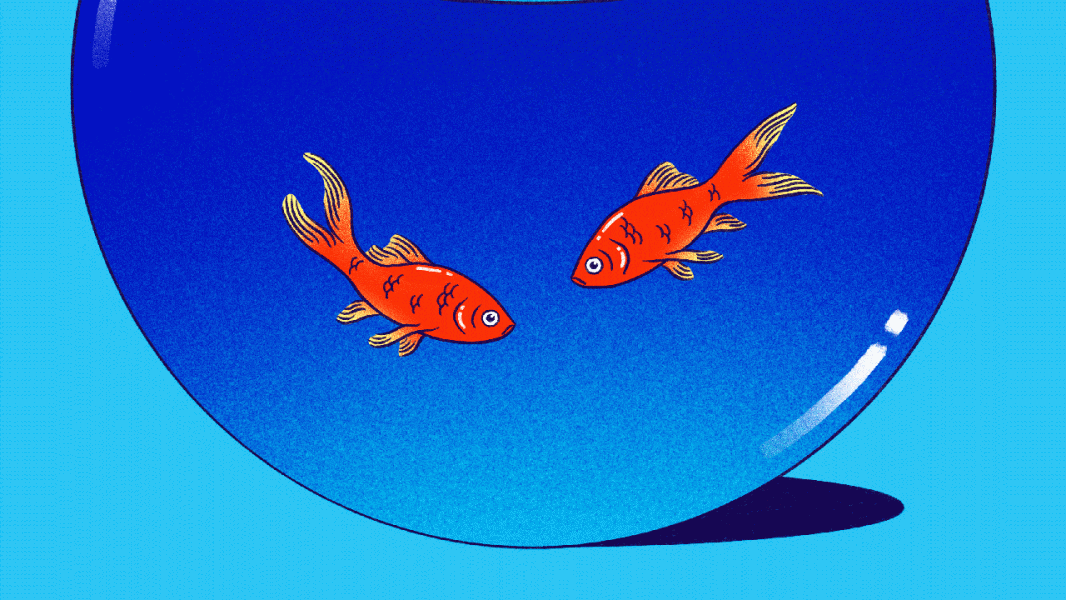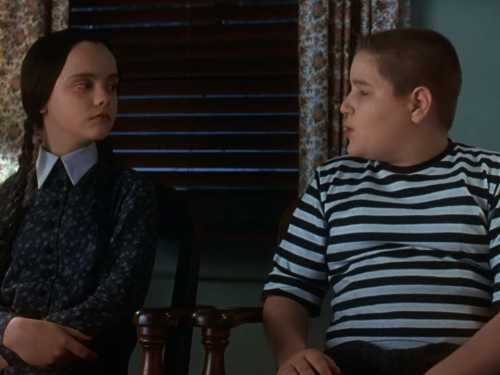
Save this storySave this storySave this storySave this story
Just before the election, I went to see a play. It was staged for a small group, was about ninety minutes long, and was followed by a Q. & A. For all that time, the audience sat quietly, respectful and absorbed, listening intently to what was said.
Afterward, during cocktail hour, I stood with another guest, a scientist who works in artificial intelligence. Almost immediately, we started talking about the rapid progress of A.I. systems that work with words. “Have you tried ChatGPT’s Advanced Voice Mode?” he asked me. (I had.) “The conversations you can have with it are almost as good as the median conversation you can have with a person!” We laughed, self-conscious about both our small talk and the contrast implicit in what we were discussing. We’d spent the evening in one linguistic world—a heightened one, in which every word mattered. We were now describing another world, in which words could be produced endlessly, and hardly mattered at all. Technology seemed to be ushering us from the first world into the second.
Over the next hour, I had good conversations with other audience members; they said interesting things, and revealed intriguing facets of themselves. On the other hand, I’d been spending a lot of time watching interviews with Kamala Harris and Donald Trump—conversations that tended to be below average. On shows like “60 Minutes,” and in her CNN town tall, Harris had been charming and trenchant but also repetitive and inflexible. Restrained by her determination to stay on message, she often failed to answer questions directly. Trump, for his part, lied, rambled, and spouted nonsense, as usual. And yet his lack of constraint at least made him entertaining. On Joe Rogan’s podcast, he told casual stories about being President that made the job seem fun (“Macron, of France—good guy, he’s, like, a friend of mine . . . I called him, I said, ‘Emmanuel . . .’ ”); on the professional golfer Bryson DeChambeau’s YouTube show, he cheerfully asked detailed golf questions before finishing eighteen holes at twenty-two under par. The golf outing was totally irrelevant to the Presidency—“BROOO I didn’t know Trump was chillll like that,” a commenter wrote—but, at his victory speech, Trump invited DeChambeau onstage, along with Dana White, the C.E.O. of the U.F.C. So maybe it wasn’t so irrelevant, after all.
Harris’s and Trump’s flawed performances were typical of the duelling communication styles now wielded by Democrats and Republicans. Broadly, Democrats preach while Republicans riff; Democrats stick to their messages while Republicans let loose with whatever comes into their heads. (J. D. Vance has spoken at some length about how much he’s been influenced by the movie “Boyz n the Hood.”) The differences aren’t just a matter of style. They reflect contrasting approaches to language, and perhaps to thought. In the Democratic world, people speak defensively, mindful of the rules they might break and of the possibility that their words will come back to haunt them. In the Republican world, people speak offensively, with the aim of making things happen, and no one cares too much about what was said in the past. Each side hates the way the other talks. To Republicans, Democrats seem rehearsed and wooden, trapped by orthodoxy, teacherly in a condescending way. To Democrats, Republicans seem scattershot, unserious, unhinged. It’s often said that Americans no longer know how to talk to each other; this is why.
The kinds of speech that strike us as authentic, satisfying, and desirable change with time, and depend on our position in the world and on the conversations happening around us. After the play, talking about A.I. and surrounded by amiable chitchat, I wondered whether, someday soon, conversations with human beings would be deemed lacking if they didn’t exhibit chatbot-like speed and responsiveness. Maybe there are some circles, in tech or elsewhere, where the quality of “the median conversation you can have with a person” is already measured unfavorably against the yardstick of A.I. Or perhaps the opposite is true: maybe we’re coming to value the awkwardness, vulnerability, and spontaneity of human conversation even more. In either case, our communications technologies will be shaping our speech—or, more accurately, continuing to shape it, since the mutual incomprehension we’re experiencing today results, in part, from networks that have already influenced our intuitions about how we should talk.
A simple, or perhaps usefully simplistic, way to understand how communication has changed is to think in terms of volume. Ever since the invention of the printing press, the sheer number of words we exchange has multiplied, and the Internet has dramatically accelerated this process. In his recent essay about the conditions that have made the Trump phenomenon possible, Adam Gopnik described “long-winded and shapeless” podcasts as “the essential medium” of our time. Of course, it’s not just podcasts that are long-winded and shapeless—prolixity is fundamental to online culture. Newspapers publish not twice a day but all day; cable news drones on and on; a post on X is short, but the scroll never ends. An army of new assertions masses every minute and marches on us through our screens. We welcome the invasion because, somehow, we remain bored.
We often say that information that succeeds in this new ecosystem has “gone viral.” But virality is a shallow, fleeting, even passive form of success; to become centrally relevant is harder. You have to be interesting—ideally, not just interesting but provocative—and quantity is vital, too, as it affords for a kind of digital malleability. If you record three-hour-long podcast episodes, as Rogan does, then you benefit from the fact that those episodes can be split into many short clips, which can recirculate forever on different platforms, creating rabbit holes. Through volume, it becomes possible to speak to multiple audiences at once, sometimes in ways that are not self-consistent. Economists and computer scientists talk about the “network effects” that take root in big interconnected systems; what they mean is that the most connected parts of a system become the most valuable. Online, this happens partly because successful creators diffuse themselves; they stop being nodes in the network and become shifting clouds of nodelets. The whole can be glimpsed only in parts, from the bottom up.
The most torrential producers, like Rogan or Taylor Swift, create endless streams of malleable, interesting content which can flow through any media pipeline, reaching even the uninterested. You don’t tune in to them—they find you. The flip side of that reach is that everyone can respond; there’s always the threat of backlash. Performers are critiqued and policed by their audiences, also in ways that are not consistent. And so, ultimately, online success depends on a loose coalition of welcoming audiences, which can drift together and apart both from one another and from the performer at their center, whom they all regard in slightly different ways. It’s the kind of thing a postmodern theorist might have described in the nineteen-eighties, only today it’s not theoretical.
It’s taken a while, but now it’s evident that politicians, too, can thrive by producing vast quantities of malleable, interesting content. A politician can post and tweet and retweet; he can speak off the cuff in memorable ways, encouraging people to film and upload his remarks. He can go on podcasts or give epic, rambling speeches, talking for hours with all sorts of people, so that clips of the best bits can be shared. He can cultivate multiple media channels—not just staid press conferences and interviews but also social-media platforms, merchandise, and memes. If he does all this, he can become dominant and inescapable, rising above the sea of information while his opponents sink beneath the waves.
A politician who takes this approach becomes a different kind of politician. In order to talk so much, and in so many contexts, he may need to give up on having consistent, focussed, and pre-formulated messages. You can’t go on all those long-winded podcasts unless you’re willing to share whatever’s in your head—and whatever’s in your head might not be accurate, respectable, or logical; it may not represent what you “really” think. Moreover, a politician who makes a lot of provocative, contradictory statements finds himself tied to whatever sticks. Although he can still direct his audience, he must also follow their unruly reactions. Whatever they believe he has to at least consider.
This kind of politics is exciting and surprising. (A word Trump fans often use is “refreshing.”) It asks and answers certain questions. Do we want our leaders to work out their often boring positions in advance, in consultation with experts and insiders? Or do we believe that such position-crafting is in some sense anti-democratic, and prefer a process of collective improvisation? The Trump movement distrusts the experts who craft positions. It also internalizes the dynamics of the Internet, transforming them into a political stance. At its center, there’s uncertainty. What does Trump really think? What’s his plan? Is the “chillll” Trump in charge, or the crazy one? Some people vote for the golfer, others for the toxic xenophobe, and their votes add up.
The challenges posed to Democrats by this approach to politics are severe. The new information environment rewards improvisational politicians and punishes message-based ones. It makes nostalgia for the old world—the one in which people trusted experts, institutions, and the media—politically dangerous, because messages drafted by institutions don’t rise above the sea of information. What’s required is a kind of political-content factory. Not a ninety-minute play, followed by a Q. & A., but a chatbot, producing endlessly.
Political messages could seem tired anyway, even before Trump. A message-based politician must endlessly negotiate the content of those messages, which can have a narrowing effect: in a recent podcast, the Times journalist Ezra Klein described the network of experts and activists who help shape Democratic positions as an “institutional straitjacket,” orienting the Party inward. Messages often need to be taught (if they’re complicated) or enforced (if they’re contentious); although some voters enjoy learning (and teaching), many don’t like being treated like pupils. Still other messages are anodyne and forgettable. What does “build back better” mean? What is the “opportunity economy”? It’s telling that the most energizing talking point of the Harris campaign was that Trump and his circle were “weird.” That moment would’ve been exactly that—a moment—in Trumpworld. The Democrats lingered over it, turning it into yet another message, which was soon overwhelmed by Trump’s free-wheeling meme machine: his real Operation Warp Speed.
Is it possible to imagine a Democratic politician who produces, in endless quantities, the kind of political content that people consume today? Someone who can riff forever, saying out loud whatever eccentric ideas come into her head, confident not only that she won’t be punished for what she says but also that, by riffing, she’ll find out what sticks? Such a person could break out of the silo of “proper” political discourse, taking advantage of the online dynamics that have allowed the American right to transform from a political identity into a cultural movement—but perhaps only at the cost of being alienating, ignorant, or wrong. We might end up in the second linguistic world—the one in which words are produced constantly, and hardly matter—when we desperately want to remain in the first.
A few years ago, no one could have predicted that Elon Musk would buy Twitter and remake it. Today, no one can say, with any real certainty, how the advent of A.I. will change the way we communicate. You never know. Maybe politics need to catch up to technology; possibly, the networked world is forcing leaders to listen to people they previously ignored. In that case, on the other side of a period of upheaval, new political messages may better represent the priorities of voters. It could also be that politics are simply changing, becoming more fluid and less coherent. At least for now, the network itself seems hostile to the old way of doing things. Whether there’s a good, new way remains to be seen. ♦
Sourse: newyorker.com






